 The year 1998 was a big one for our wild horses and burros -two major events happened that laid the groundwork for the most stunning change in wild horse and burro policy since the passage of the Wild Free-Roaming Horse and Burro Act.
The year 1998 was a big one for our wild horses and burros -two major events happened that laid the groundwork for the most stunning change in wild horse and burro policy since the passage of the Wild Free-Roaming Horse and Burro Act. Of course, this change would be the Unconditional Sale of our herds commonly known as the Burns Amendment and now carried out by BLM under the term “Sale Authority”.
However, as is commonly believed, there was nothing “stealth” about it – selling our wild heritage was well planned and coordinated long before it was “slipped in” the day before the Thanksgiving break.
In August of 1998, Nevada Ecological Consulting, Inc. presented the Draft Nevada Wild Horse Management Plan for Federal Lands to the Nevada Department of Conservation and Natural Resources/Commission for the Preservation of Wild Horses in response to Bill 211, enacted by the Nevada Legislature in 1997 requiring the Commission to develop a plan for managing wild horses in Nevada.
There were sixty-five participants that provided input for this plan as well as nine public meetings held throughout the state.
In August of 1998, Nevada Ecological Consulting, Inc. presented the Draft Nevada Wild Horse Management Plan for Federal Lands to the Nevada Department of Conservation and Natural Resources/Commission for the Preservation of Wild Horses in response to Bill 211, enacted by the Nevada Legislature in 1997 requiring the Commission to develop a plan for managing wild horses in Nevada.
There were sixty-five participants that provided input for this plan as well as nine public meetings held throughout the state.
The Plan discussed a large array of issues on wild horse and burro management but almost none of the solutions presented to maintain wild horses and burros as integral components of public lands have gone any further than the drawing board. The emphasis seemed to be on what to do with the wild horses and burros once they had been removed from the range, not providing the critical habitat requirements necessary to keep them from being removed.
Here are exact quotes from this Draft Management Plan:
Section 5.82 - Strategy:
By the year 2005, reach AML on all delineated HMAs by removal of unadoptable wild horses (as a last resort), either by euthanasia methods preferably on home range, or by sales authority granted to BLM with all sale receipts earmarked to defray program costs.
Section 5.83 - Actions:
Section 5.83 - Actions:
BLM and Congress should abide by the provisions of the ACT allowing euthanasia as a humane method of removal of excess numbers of unadoptable wild horses, and that the euthanasia prohibition in the annual Congressional Appropriations Act for funding of the wild horse program be rescinded.
Congress should consider amending the ACT to allow sales authority to BLM for placement of unadoptable wild horses where a reasonable number of adoption attempts have failed to place the animals. All sale receipts from such placement to be earmarked to the state of origin to defray costs of program.
BLM should consider initiating studies on time delay “Sunset”* euthanasia drugs which would allow humane death of known unadoptable wild horses on home range to spare the animals the stress of shipping and corral storage and to eliminate these program handling costs. (*A Sunset Drug is a drug that would be administered allowing the wild horses and burros to be killed slowly.)
Appendix B, Page 11
1) Amendment to the Wild Horse & Burro Act of 1971 is needed to include a sales authority clause to remove excessive numbers of unadoptable animals with sale proceeds earmarked to defray program costs.
Appendix C, Synopsis of Public Forum, Page 5
3 strikes and you're out by either sale or euthanasia.
Here is the law that was enacted six years later, initially reported as having been co-sponsored by Nevada Senator Harry Reid, which our Congress has still failed to repeal-
Here is the law that was enacted six years later, initially reported as having been co-sponsored by Nevada Senator Harry Reid, which our Congress has still failed to repeal-
Fiscal Year 2005 Omnibus Appropriations Act
Public Law 108-447, Division E, Section 142
SEC. 142. SALE OF WILD FREE-ROAMING HORSES AND BURROS. (a) IN GENERAL- Section 3 of Public Law 92-195 (16 U.S.C. 1333) is amended--
(1) in subsection (d)(5), by striking `this section' and all that follows through the period at the end and inserting `this section.'; and
(2) by adding at the end the following:
`(e) SALE OF EXCESS ANIMALS-
`(1) IN GENERAL- Any excess animal or the remains of an excess animal shall be sold if--
`(A) the excess animal is more than 10 years of age; or
`(B) the excess animal has been offered unsuccessfully for adoption at least 3 times.
`(2) METHOD OF SALE- An excess animal that meets either of the criteria in paragraph (1) shall be made available for sale without limitation, including through auction to the highest bidder, at local sale yards or other convenient livestock selling facilities, until such time as--
`(A) all excess animals offered for sale are sold; or
`(B) the appropriate management level, as determined by the Secretary, is attained in all areas occupied by wild free-roaming horses and burros.
`(3) DISPOSITION OF FUNDS- Funds generated from the sale of excess animals under this subsection shall be--
`(A) credited as an offsetting collection to the Management of Lands and Resources appropriation for the Bureau of Land Management; and
`(B) used for the costs relating to the adoption of wild free-roaming horses and burros, including the costs of marketing such adoption.
`(4) EFFECT OF SALE- Any excess animal sold under this provision shall no longer be considered to be a wild free-roaming horse or burro for purposes of this Act.'.
Photo of wild horse being roped downloaded from BLM State Field Office Website http://www.blm.gov/

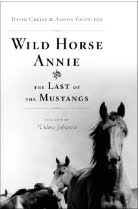








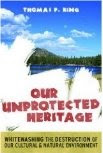



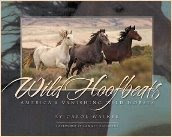




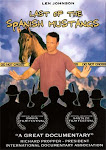





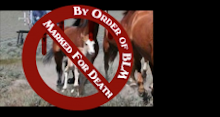
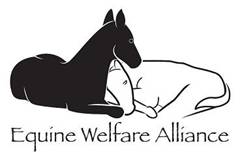
No comments:
Post a Comment